6 Glute Exercises for Knee Pain

Knee pain is one of the most irritating pains to experience. It radiates from deep within the joint and it can be rather challenging to relieve. There are many options that are helpful for the short term, but the long-term solution is to work on improving the strength of that joint – not an easy task either. But it turns out, if you’re experiencing knee joint pain, it’s actually best to strengthen the muscles around the knee: that is, the quadriceps, hamstrings, hips/glutes, and abdominal muscles.
It may seem counterintuitive to strengthen knees by strengthening an entirely different area of the body, but hear us out. When one or more of your muscle groups are considerably weaker than the others, it means your body will naturally use another group of muscles to compensate, adding strain elsewhere in your body.
Previously, we have blogged about 10 Quad Strengthening Exercises for Knee Pain. Now, we’re continuing that series with glute exercises for knee pain.
As with our quadriceps blog post, we’ve listed these exercises in order from most to least difficult to perform, as well as including any variations in weight or form that should make the movements accessible to anyone. If you find yourself having a hard time doing any of these exercises, we highly recommend checking out this post by WebMD, which has very simple exercises to target specific activities that folks with knee pain and a low fitness level might find useful.
What are the glutes?
The gluteal muscles (commonly referred to as “the glutes”) are comprised of 3 major muscles:
- The gluteus medius – Probably best described in layman’s terms as the topmost gluteal muscle, this is also the most underworked muscle of the glutes.
- The gluteus maximus – This muscle is mostly what we think of when we think of “the glutes.” It is the largest of the three muscles and covers most of the posterior area.
- The gluteus minimus – As the Latin name suggests, this is the smallest of the three gluteal muscles. It is underneath the gluteus medius.
The glutes are an often underutilized muscle group, but they should not be underestimated. Like your quad muscles, they are extremely large and can be powerful when loaded with targeted strength training.
6 Glute Exercises for Knee Pain
Banded lateral walk

As DJ Casper once famously sang: slide to the left! Or the right! Really, as long as you’re moving to one side, this exercise will do the trick.
Adding a resistance band is a great way to increase difficulty and build strength. Beginning with some moderate resistance is a good place to start for most people.
What you’ll need: A resistance band of appropriate strength for your capabilities.
Variations: This exercise is relatively easy, and so it’s unlikely you will need to modify it. If you want to begin simply with the motion, however, you can certainly do so.
How to do it: Loop your resistance band around your ankles and, with knees slightly bent, step to the side. Move your other foot to join your feet together and repeat for your desired number of reps.
Glute bridges
This is one of the best-known glute exercises for knee pain that should be a workout staple!
What you’ll need: An exercise mat to stabilize your body and provide grip for your feet to push against. You can also add a resistance band, weight plate, or kettlebell if you choose.
Variations: Knee Pain Explained has several modifications to “progress” your glute bridges, taking them from easy to challenging. Some of these variations include “heel bridges,” adding a resistance band across your midsection, or looping a resistance band around your knees.
How to do it: Lying on your back, preferably on an exercise mat, set your feet flat on the floor with your knees pointing upwards. Use your glutes to lift the middle of your body up as far as you can, hinging at the shoulders. Press firmly into your shoulders and feet. Slowly lower yourself back towards the ground, but don’t completely settle your weight back on the floor if you want a real challenge.
Clamshells
They’re exactly what they sound like! Imagine making a clamshell out of your knees. That’s it!
What you’ll need: Yourself and any resistance bands you need to feel the burn!
Variations: This exercise is also relatively beginner-friendly, but if you need to complete a session or two without added weight from resistance bands, that’s totally fine!
How to do it: While laying on your side, draw your legs up so that your knees are out in front of you. Then, hinging at the hips and ankles, lift your top knee. Hold at the top, then slowly lower your knee back down. Don’t let it settle completely on your thigh to make the exercise properly challenging.
Hip thrusts
This exercise can really make a difference in your glute and hip strength quickly. I would consider it moderately challenging, but still not too strenuous if your knees are a bit sore. It doesn’t require the knee to move far outside its typical range of motion, unlike the squat, and can be used as a stepping zone to building greater strength and mobility.
What you’ll need: A weight bench or, if you’re working out at home, a couch is a great substitute! Be sure to also grab any additional weight plates (with or without a barbell) or kettlebells to increase difficulty as needed.
Variations: You can (and probably should) start this without any additional weight to get comfortable with the form and motion. It can be a bit awkward to perform, and the more comfortable you are with the motion, the more confident you will feel.
How to do it: Sit on the floor beside your couch or weight bench, with your back against it. Load up any weight you want to add across your hips – a barbell should sit across where your femur connects to your hip bone. Pushing into your shoulders and your feet, squeeze your glutes to raise your hips until your mid-body is straight. Your shins should remain vertical and your core engaged. Pause at this stage for extra burn! Then, slowly lower yourself until your lower back body is about 45 degrees from the floor – try not to completely settle your weight on the ground to get the full force of the exercise.
Deadlifts
Like squats, the deadlift is a very versatile exercise that can target different lower-body muscle groups based on how you approach your form. Train Heroic has an excellent resource on variations of deadlifts to target your glutes, hamstrings, or quadriceps. So does Men’s Health!
What you’ll need: Dumbbells of an appropriate weight or a barbell with weight plates.
Variations: If you’re a beginner, starting without weight or with just a barbell is a great way to encourage proper form and start building muscle in vulnerable areas.
How to do it: This is an exercise that may be easier to understand when presented visually, so go ahead and check out either of the links presented above, or this Youtube video by Ruth Maleski!

Glute targeted squats (sometimes called “Goblet Squats”):
Dropping your backside deeper into the movement than the more common quad-focused squat, which was outlined in our previous blog post, will help you engage those glutes.
What you’ll need: Yourself and any additional weight you would like to add.
Variations: Unlike the hamstring squat, the glute targeted squat is harder to modify. Since it requires dropping deep down, it does place more strain on the knees. This is an exercise that should be worked up to, especially if you are experiencing intense knee pain. But once you’ve started to improve your leg strength with these targeted exercises, the glute-focused squat will help you round out your training. At the gym, you might see people using wedges or a weight plate to elevate their heels during this exercise. This is great to do on quad day, but you’ll want to stay flat footed to work your glutes.
How to do it: Like the deadlift, it’s probably easier to get the finer points on how to make your squat truly glute-focused by watching a video. We recommend this video by Team Evolve on Youtube. But just briefly, the highlights are: feet turned slightly out, squat by moving your backside down and behind you, just slightly past parallel.
When to add extra knee support
Knee pain is insidious, affecting a large range of the body’s natural motion. Once it starts, it can be hard to perform the necessary movement to strengthen muscle groups that will help stop it. Adding extra knee support can help provide not only stability, but confidence that your knees will carry you through challenges.
If you’re not sure what type of knee support is right for you, you might want to check out our blog post: The Ultimate Guide to Choosing the Right Knee Support Brace. Every kind of conventional knee support will have its pros and cons, but there should be something out there that will help you!
But Bracelayer came onto the scene with those pros and cons in mind. It knows that many people benefit from the compression and support of conventional knee sleeves, but hate that they’re always sliding down. And knee braces, too! We saw the need for dedicated knee support that combined all the benefits of compression athletic wear, and the knee stabilizing compression pant was born!
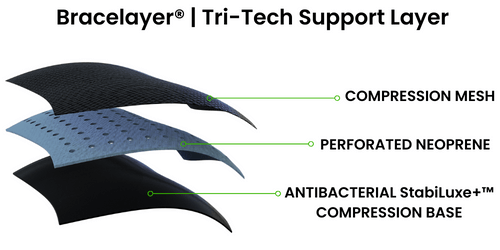
Bracelayer compression pants are built on an antibacterial compression fabric base, with a medical grade, perforated neoprene layer around the knees, covered with compression mesh for a little bit of extra support. They come in a variety of stylish, multi-sport designs with something for everyone! For example, our thermal leggings (Alpine designs) are the perfect base layer for those who like to get active outdoors. The KS designs feature a drawstring waistband and phone pockets, ideal for runners, gym workouts, and aerobic exercisers. We even have designs specifically for cycling and hockey!
A little bit of extra support may be just the extra push you need to take action, strengthen those muscles around your knees, and get rid of knee pain for good. Bracelayer pants are proven to not only help reduce pain, but prevent further injury and encourage healing.
And don’t just take our word for it! Here’s some testimonials from others who have loved their knees again thanks to Bracelayer!
- "I love the compression tights. I feel my squats are much better with the help of the reinforced knees. I hope you come out with more gear." - Rob C.
- "My 16 year old daughter dislocated her knee six months ago and has been wearing a knee brace since. She loves the pants because now she can go skiing without it and loves the feeling and look of them. As a fitness instructor myself they help with the on and off knee pain. Going to get a pair for my soccer player son too!" - Rocio C.
- "Instant relief. I so appreciate the support I get from these compression pants! Excellent product." - Kristen S.
- "Just wanted to let you know my 1st impressions of the Men's KX1 and KX2 pants. I have had a total of 11 knee surgeries so I recently purchased the afore mentioned products. First impression: Outstanding! The fit, feel and compression are perfect. After a gruelling 'leg day' I normally struggle for the next couple days. Not anymore. My knees feel great, and the glutes, quads, and calves all have recovered far more quickly." - George D.
- "I love my Bracelayer tights. Have had 2 knee replacements and figured I'd try these for walking on cold mornings. They’re like my security blanket." - Lizzy

















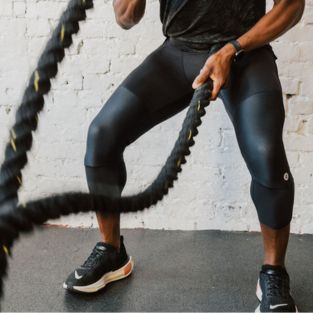
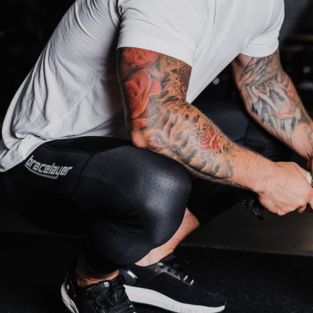
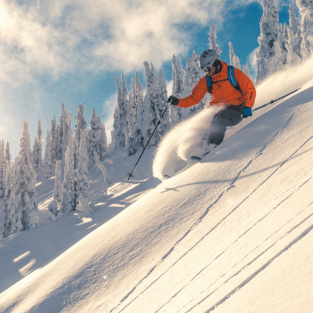
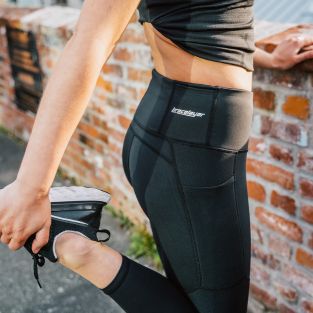
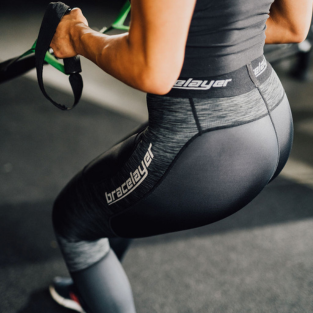

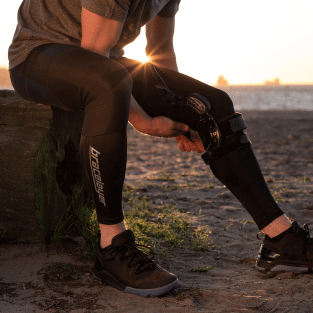
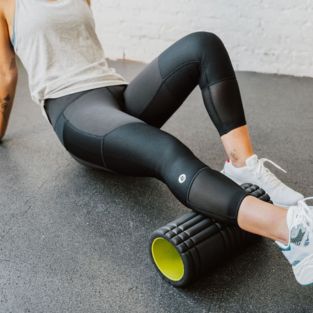
Leave a comment